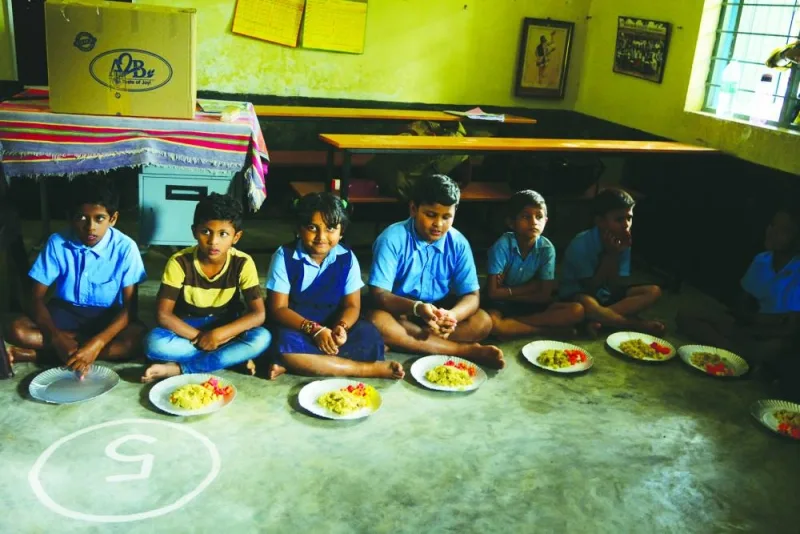But if well-intentioned efforts to tackle learning poverty do not account for the complex and interrelated challenges that prevent children in poor countries from achieving academic success, they risk reproducing existing inequalities in educational outcomes.
For the more than 1bn children worldwide who live in multidimensional poverty – lacking access to adequate nutrition, healthcare, safety, and sanitation – the barriers to learning extend far beyond the school gates. They may suffer from the psychological stresses of poverty or be hungry at school, both of which impede learning. Perhaps violence threatens them inside or outside the classroom, or they are at risk of being married off young and dropping out of school. Overreliance on technical solutions designed to address the proximate causes of learning poverty from the supply side could leave many of these children behind.
Policymakers in low- and middle-income countries and aid organisations tend to decouple education policy from the underlying issues of poverty and social vulnerability. This can partly be attributed to the fact that the Washington Consensus advocated small government in developing countries, limiting their ability to implement broad-based social policies in conjunction with expanding schooling. The advent of New Public Management reforms, which emphasised quantifiable performance based on narrowly defined organisational objectives, also likely discouraged education ministries from addressing well-being more broadly or encouraging intersectoral collaboration.
As for donors, their laser focus on channelling resources to cost-effective projects with specific and measurable outcomes has seemingly diverted attention from more complex problems that extend beyond the classroom. An overview of the education strategies of major multilateral and bilateral aid organisations shows that their inclusion and well-being agendas are too often limited to girls’ education and children in fragile states or marginalised regions, leaving other forms of deprivation unaddressed.
Consider, for example, school meals, an area where education policies and anti-poverty measures intersect. Since the start of the pandemic, lower-middle-income countries have expanded their school-meal programs by an average of 12% – three times higher than their wealthier counterparts. This contrasts sharply with the 4% contraction, on average, in school-meal coverage in low-income countries, which usually have the neediest children but lack the fiscal space to expand meal programmes.
The prevailing view in Uganda, a low-income country where the provision of school meals is patchy, is that the government has only a narrow role to play in education – a view enshrined in the country’s legislation. As Joyce Moriku Kaducu, the minister of state for primary education, puts it,
“Education is a shared responsibility. The government and parents have different roles to play. The government ensures that there is a conducive environment for learning by providing infrastructure, teachers, and learning materials. Parents have the core responsibility of sending learners to school, ensuring the learner is appropriately dressed, and that the learner is well fed, even at school.”
This narrow view of the state’s role in education prevails among donors and policymakers and has been ingrained by the neoliberal notion of minimal government intervention.
The tendency to draw an artificial boundary between a child’s education and overall well-being is also evident in the “smart buys” report. Produced by a panel of high-profile international experts and sponsored by many of the largest donors in global education, the report classifies school meals as an “effective, but ... relatively expensive” way to deliver learning outcomes. In the panel’s view, “education systems face budget constraints, and they need to allocate scarce resources toward whatever interventions will deliver the most learning gains for the most children and youth on a given budget.”
In fact, providing school meals – a form of transfer to households – is less of an economic cost to society than a direct fiscal cost to government. Moreover, spending on programs with multisectoral benefits does not necessarily have to be constrained by the education budget.
By the same token, some donors are fixated on the false dichotomy between intervention in early childhood and during school attendance. The United Kingdom’s Foreign, Commonwealth, and Development Office, for example, notes that feeding children before the age of two is more effective than feeding school-age children. Apart from the moral issue at stake, it is unclear how allowing school-age children to go hungry can be cost-effective from an educational perspective. When examining the evidence, it makes little sense to separate the educational, nutritional, and safety-net benefits of school meals for children and their families.
Breaking through such conceptual silos in governments and donor bureaucracies could be the first step toward adopting a much more holistic approach to education policy and resource allocation. More fundamentally, better learning outcomes requires greater comprehension of the realities of school life for poor children. Like all children, they will learn best when they are free from hunger, illness, and violence. – Project Syndicate
- Biniam Bedasso is a senior research associate at the Center for Global Development. Susannah Hares is Director of the global-education program at the Center for Global Development.

